I have intercepts and slopes of 14 different lines where y = Slope * x + Intercept. The lines are more or less parallel as follows. Each line represent a certain class.
Intercept Slope
1 8.787611 -3.435561
2 6.853230 -2.662021
3 6.660198 -2.584231
4 6.929856 -2.678694
5 6.637965 -2.572499
6 7.132044 -2.744441
7 7.233281 -2.802287
8 7.285169 -2.807539
9 7.207577 -2.772140
10 6.872071 -2.640098
11 6.778350 -2.612107
12 6.994820 -2.706729
13 6.947074 -2.690497
14 7.486870 -2.864093
When new data comes in as (x, y). I'd like to do two tasks:
1) Find which line is the closest to the point (e.x. '1', '4', or '8')
2) Find the interpolated value at x = 2.6 . This means that if a point is located between two lines, and the lines have values of 0 and -0.05 for x = 2.6, then the interpolated value would be in [-0.05, 0] proportional to the distance od the point from the lines.
x y
1 2.545726 0.1512721
2 2.545726 0.1512721
3 2.545843 0.1512721
4 2.545994 0.1512721
5 2.546611 0.1512721
6 2.546769 0.1512721
7 2.546995 0.1416945
8 2.547269 0.1416945
9 2.548765 0.1416945
10 2.548996 0.1416945
I am considering writing my own code and finding the distance of the new point from 14 lines using this Wikipedia page and then choosing the two minimum distances of the lines above and below the point (if the point is not above or below all 14 lines), and interpolate proportionally. However, I am pretty sure that would not be the fastest way since it is not vectorized. I was wondering whether there is a faster approach for this task.
